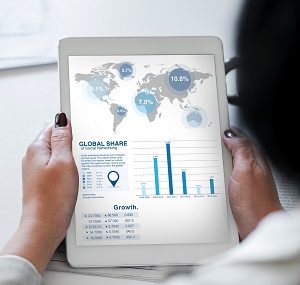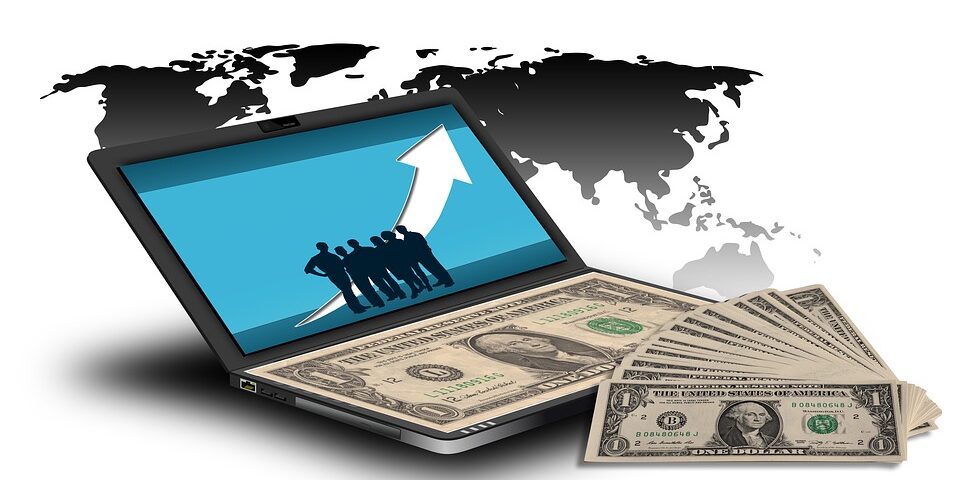Introduction
 We are in the most dynamic of times because the global economic and political systems are vastly changing (Gilpin & Gilpin, 2000, p. 1). As the critics have said, the world, as led by the United States of America, has entered “the Second Great Age of Global Capitalism” (2000, p. 1). Hence, we have already established a global market that is hailed as a purveyor of an international or global economy. This global market is said to bring greater interdependence amongst nations. It paves for world peace as the global market. This is because it is considered a bridge between the rich and the poor countries.
We are in the most dynamic of times because the global economic and political systems are vastly changing (Gilpin & Gilpin, 2000, p. 1). As the critics have said, the world, as led by the United States of America, has entered “the Second Great Age of Global Capitalism” (2000, p. 1). Hence, we have already established a global market that is hailed as a purveyor of an international or global economy. This global market is said to bring greater interdependence amongst nations. It paves for world peace as the global market. This is because it is considered a bridge between the rich and the poor countries.
As everyone assumes a cohesive and unified global economy, this is not always the true case of a market economy. The significance of this unified economies can be assessed by the overall development of the nations of the world.
In the aspect of world peace, so much can be said about the impacts of global trading in the social development of the nations.
This paper attempts to explore the negative concerns on the statement that “establishing a global market is the pathway to world peace.”It tries to show that this statement is not necessarily true since there are many illustrations which prove the opposite. Hence, this paper will initially show the unifying global forces in the establishment of world peace. Then, it shall present the devastating effects of the global markets that threaten world peace and instigate nations to take a protectionist stance towards their national growth and development.
How Global Market Paves the Way to World Peace
 World trade, as embodied by globalization and the creation of a global market, aids in sustaining economic growth and total development (WTO Website, 2017). World trading rules even out the global economy by regulating trade policies among countries engaged in trade. Hence, global trade or global economy increases market certainty and discourages protectionism (2017, p. 1).
World trade, as embodied by globalization and the creation of a global market, aids in sustaining economic growth and total development (WTO Website, 2017). World trading rules even out the global economy by regulating trade policies among countries engaged in trade. Hence, global trade or global economy increases market certainty and discourages protectionism (2017, p. 1).
According to the World Trade Organization, the trading of various economies among each other promotes stability. It also adds up to global peace (2017, p. 1). This organization administers the smooth and free trading between nations. Before the WTO, nations were wary of each other even though they engaged in trading. They maintained a closed market and concentrated on their local, market interests (2017, p. 1).
With the organization of the WTO, countries became more open. They were also obliged by the WTO to promote open market policies and free trading (2017, p. 1). They instituted a firm belief in an open market system and this created stability and market confidence.
Eventually, this stability redounded to more national confidence in the WTO’s leadership and the independence of the world trade system. Their cooperation resulted in a stronger economic tie that translated to greater cooperation and peace among these participating nations.
On The Other Side of The World
On the other side of the fence, there are contentions that the establishment of the global market also pervades stability and creates conflict since greater global competition reduces the secured markets of certain economies (Gilpin & Gilpin, 2000, p. 1). Hence, the globalization of the markets and the economies gives both insecurity and instability to other nations. This, in turn, creates pressures to take arms against each other.
Gilpin & Gilpin (2000) contend that global market promotes more income inequality and seriously high unemployment rate. They also argue that global market also facilitates the oppression of women and children (2000, p. 11). Others criticize that global trading promotes trade protectionism, closed regional settings, and rigid human migration laws (2000, p. 11).
To wit, the establishment of a global market implies that the goods and services produced in one country are competitive with those of the other countries. It also means that the factors of production used in producing goods and services, particularly labor, should be very competitive (or cheap). This is to maximize market efficiency and sustain market production.
These market fundamentals in an open market economy (as espoused under a global market) allow human resources to be exploited. Hence, for a foreign company (such as Gap or Guess) to remain globally competitive, it needs to source out its labor and production in a country or market with extremely low cost of labor.
 While this promotes market efficiency for their product, it encourages exploitation and/or oppression for children and labor for a locality or country. Another negative impact of a global market economy is the continuous widening of the gap between rich and poor countries. Since the rich countries can employ greater resources and factors of production (such as land, capital, and labor), they have the greater share of the global market. They take advantage of the fruits of their labors according to a free market system.
While this promotes market efficiency for their product, it encourages exploitation and/or oppression for children and labor for a locality or country. Another negative impact of a global market economy is the continuous widening of the gap between rich and poor countries. Since the rich countries can employ greater resources and factors of production (such as land, capital, and labor), they have the greater share of the global market. They take advantage of the fruits of their labors according to a free market system.
Gilpin and Gilpin (2000) also impress that the technological and knowledge resources of rich countries further make them more competitive and efficient. Thus, it is further enriching their economies as compared to the poor countries.
In the end, the poor countries end up as harboring negative sentiments over other advanced countries. This can be very well reflected by the growing insecurities in the status of the United States and China, whose economies vie for market leadership globally. Suffice to say, instead of promoting peace and order; the global market system instigates conflicts and disorder among poor nations (Gilpin & Gilpin, 2000, p. 20).
The more that the poor nations realize that they will never have enough of the capital and resources which the rich nations enjoy, they will begrudge their market standing and envy the rich countries. The global market issues during the 1990’s attest to this argument. It clearly showed that the negative effects of globalization were greater than its benefits (2000, p. 21). At those times, the global market was pushed to export more goods and services. Hence, intensifying the global market competition. It also makes economies compete with each other head-on.
Sad to note, the main rivals during these intense periods in the global market system were mainly the major US and European companies and large firms from the First World. More so, even when the world trading environment is said to be open and fair, most of the trading advances are being realized by the First World such as the United States, Europe and Japan (2000, p. 21).
Most of the developing nations remain overseas markets for these big economies’ surpluses (2002, p. 21). The poor nations try to fare well regarding their food and raw materials exportation. To illustrate, even with the intense trading among nations, South Africa only contributed about 1% to the overall global trading during the 1990s (2000, p. 21).
Regarding capital and foreign direct investments, it is also the First World which is at the helm of reaping the rewards of an integrated financial system. There are just modest foreign direct investments in the Third World. This exempts the emerging economies such as the oil-producing countries in the Middle East (2000, p. 22).
Conclusion
All these economic inequalities redound to deeper issues in the social aspects of the poor nations. Interestingly, even with greater global integration and trading, we witnessed the rise and fall of developing nations. We saw the fall of the Arabian regimes such as those of Egypt, Syria, etc. This shows that even when global market system is said to be overwhelming or promoting world peace, the opposite is true. More and more economic inequalities stir more conflicts and problems.
While these countries control the economic realms under a global market system, they also take charge of the political and international affairs of the world (Ebeling, 2015, p. 1). This is because these rich nations are also the forces behind the global institutions. Examples are the United Nations, IMF, World Bank, etc. They hold much of the world’s investments, technology, and access to global markets.
This reality triggers conflict in many countries. To illustrate, the economic realities of the Arab world, were a great cause of their hatred of the American people (Gilpin & Gilpin, 2000). It was the rallying force behind the Al Qaeda. This is because they were oriented to believe that the First World economies were behind their poor plight. The critics point out this economic conflict as a major point of contention in a globalized market. The intensity of the economic competition translates to greater domestic and international conflicts. Critics assume that the open economy will unavoidably create “more losers than winners” (Gilpin & Gilpin, 2000, p. 11).
The critics further contend that the economic forces could result in an expansive struggle among countries, economic classes, and powerful institutions. They believe that these economic issues will be at the heart of political competition.
As they say, the former clash between capitalism and communism has been changed into the conflicts between social systems and economic blocs (2000, p. 32). For these illustrations, this paper concludes that global market establishes a world that is increasingly set with conflict instead of peace.
Bibliography
Ebeling, R., 2015. Global Free Trade Makes for Mutual Prosperity and World Peace. The Future of Freedom Foundation Website. Available at: http://www.fff.org/explore-freedom/article/global-free-trade-makes-mutual-prosperity-world-peace/. [Accessed 09 January 2017].
Gilpin, R. & Gilpin, M., 2000. The Challenge of Global Capitalism: The World Economy in the 21st Century. Princeton: Princeton University Press.
WTO Website, 2017. “The WTO can … contribute to peace and stability.” Available at: https://www.wto.org/english/thewto_e/whatis_e/10thi_e/10thi09_e.htm. [Accessed 09 January 2017].
Want something like this? Visit us at www.wedoyouressay.com for more information.







